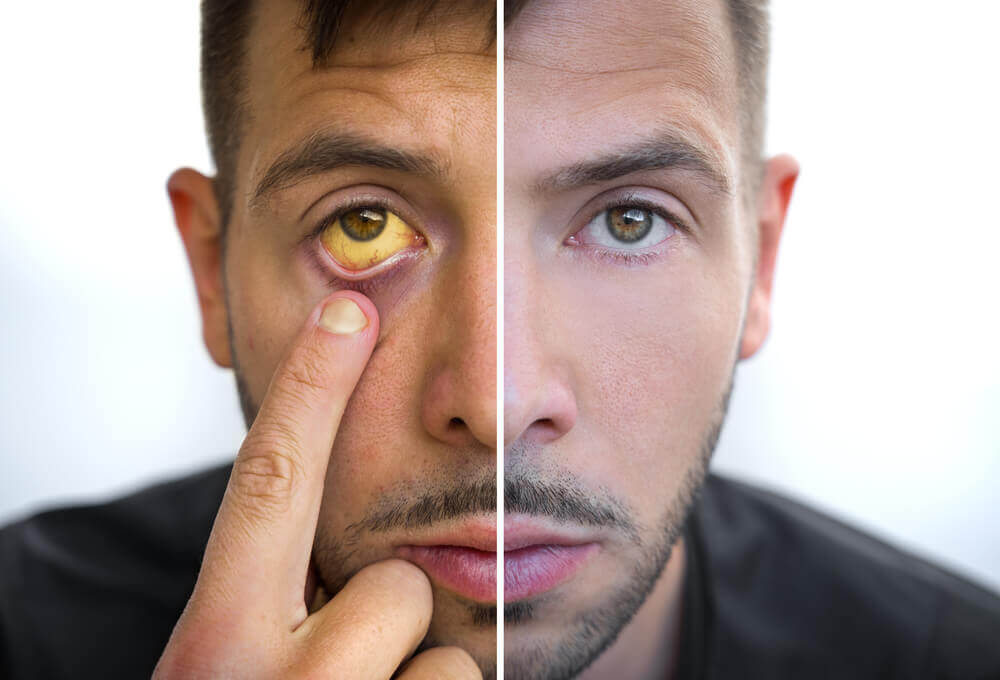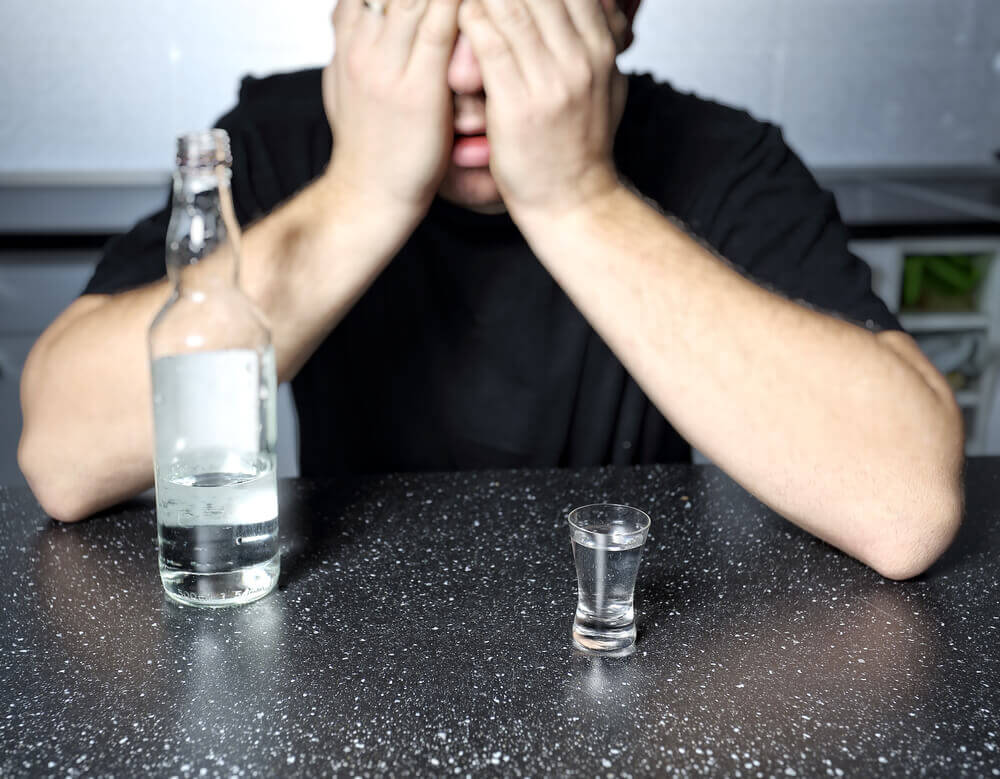Alcohol-related liver diseases are life-threatening conditions!
Alcoholic liver disease refers to a range of conditions caused by damage to the liver due to chronic and excessive alcohol consumption. More specifically, alcoholism is one of the leading causes of liver disease. Years of heavy drinking can lead to inflammation, swelling, and structural changes in the liver. In addition to liver damage, excessive alcohol consumption can also harm other organs in the body.
Alcoholic liver disease is a significant global health concern. It is estimated that around 2 million people die from liver disease each year worldwide. Cirrhosis of the liver is currently the 11th leading cause of death, while liver cancer ranks 16th. Together, these conditions account for 3.5% of all deaths globally. Additionally, an estimated 75 million people each year suffer from alcohol abuse or excessive alcohol consumption, putting them at serious risk of developing alcoholic liver disease. Alarmingly, the number of people diagnosed with some form of alcoholic liver disease continues to rise globally.
Cirrhosis of the liver is the final, terminal stage of alcohol-related liver disease, with a high mortality rate.
For example, in Western countries, excessive alcohol consumption is the leading cause of liver disease. In the United States, 8–10% of people drink excessively, and 10–15% of heavy drinkers will develop liver disease.
The two most crucial factors in the development of alcoholic liver disease are the daily amount of alcohol consumed and the duration of alcohol intake. Learn more about liver diseases caused by alcohol abuse and addiction on our blog.
Liver Disease Symptoms
Before looking at the symptoms of liver disease, it’s important to understand the function of this vital organ. The liver is the second-largest organ in the body, after the skin. Its primary role is to detoxify the body by filtering out harmful substances. When alcohol is consumed, the liver recognises it as a poison, processes it, and works to eliminate it from the system. Since alcohol cannot be stored in the body, it is processed in the liver before being removed.
When alcohol (ethanol) is broken down in the liver, it produces toxic compounds such as acetaldehyde, which leads to inflammation and damage to liver cells. In other words, an alcoholic liver fails when addiction is present. The greater the amount of alcohol consumed and the longer the period of consumption, the higher the risk of developing alcohol-related liver diseases. Additionally, the type of alcoholic beverage consumed has no significant effect on the development of alcoholic liver disease. In fact, chronic, moderate alcohol consumption is more harmful than occasional binge drinking, as the liver’s ability to regenerate is overwhelmed by prolonged exposure to alcohol.
Alcohol-related liver disease can also develop in individuals who drink alcohol in moderation.
Several risk factors contribute to the development of alcoholic liver disease, including:
- Poor diet
- Genetics and family history of liver disease or other related conditions
- Exposure to toxins and viral hepatitis
- Weakened immune system
- Frequent or occasional alcohol consumption
- Chronic alcohol consumption
- Obesity
- Binge drinking or acute heavy drinking
Alcohol-related liver disease typically affects individuals between the ages of 40 and 50. While it can vary from person to person, men are more frequently affected by alcoholic liver disease than women. However, women are more sensitive to the effects of alcohol. In fact, women are more prone to developing alcoholic liver disease, even with lower levels of alcohol consumption, both in the short term and long term.
Here are the general symptoms of alcoholic liver disease:
- Weight loss and loss of appetite
- Feeling unwell or nauseous
- Yellowing of the eyes and skin (jaundice)
- Easy bruising
- Swelling in the ankles and abdomen
- Vomiting blood or passing blood in the stool
- Pale or clay-colored stool
- Confusion, fainting, and drowsiness
- Nausea and increased thirst
- Abdominal pain
- Redness in the hands, palms, and feet
- Bleeding gums
- Mood swings and unusual agitation
- Breast enlargement, impotence, and shrinking testicles in men
Alcoholic liver disease includes:
- Fatty liver
- Alcoholic liver cirrhosis
- Alcoholic hepatitis
- Liver fibrosis

Symptoms of Fatty Liver
The symptoms of fatty liver can vary. Also known as steatosis liver disease, this condition occurs when excess fat accumulates in the liver. A small amount of fat in the liver is normal, but when fat builds up in excess, it causes inflammation and scarring of the liver (hepatic fibrosis). In severe cases, these scars can lead to liver failure.
When fatty liver occurs in someone who consumes large amounts of alcohol, it is referred to as alcoholic fatty liver disease. In this case, the liver of an alcoholic becomes overloaded with fat deposits. It only takes a few days of heavy drinking for a person to develop fatty liver. Although fatty liver disease is often asymptomatic (without noticeable symptoms), it serves as a warning that the person is drinking excessively. The good news is that fatty liver is a reversible condition. By simply stopping alcohol consumption (abstinence), the liver can return to normal.
However, experience has shown that alcoholics often continue drinking if they don’t experience any symptoms. It is only when they begin to feel symptoms, such as liver pain after drinking, that they attempt to stop. This can lead to an alcohol withdrawal crisis, with symptoms that can be extremely uncomfortable and distressing.
Symptoms of Fatty Liver
The symptoms of fatty liver may include:
- Nausea
- Dull abdominal pain (in the upper right quadrant)
- Loss of appetite
- Fatigue
As fatty liver disease progresses, the symptoms can worsen and may include:
- Yellowing of the skin and sclera (jaundice)
- Swelling in the legs and abdomen (edema)
- Severe fatigue and mental confusion
- General body weakness
There are four stages of fatty liver development:
- Simple fatty liver – Not dangerous, but serves as a warning.
- Steatohepatitis – Inflammation of the liver.
- Liver fibrosis – Ongoing liver inflammation leads to scarring of the organ.
- Cirrhosis of the liver – Extensive scarring of the liver that impairs its ability to function.
Alcoholic Hepatitis Symptoms
Alcoholic hepatitis is an inflammatory liver condition caused by long-term heavy drinking. Ongoing alcohol abuse and excessive consumption can worsen the condition. It is important not to confuse alcoholic hepatitis with infectious hepatitis. When a person develops alcoholic hepatitis, they become aware for the first time that alcohol is damaging their liver. In rare cases, alcoholic hepatitis can also develop after consuming a large amount of alcohol over a short period. The liver of someone with alcoholic hepatitis is severely damaged and requires appropriate medical treatment.
Liver damage associated with a milder form of alcoholic hepatitis is often reversible and may not show any symptoms. However, a severe form of alcoholic hepatitis is a serious and potentially life-threatening condition. As the disease progresses, the symptoms can worsen.
Symptoms of Alcoholic Hepatitis
- Pain in the liver after alcohol consumption
- Enlarged and painful liver
- Stomach pain
- Fluid retention in the abdomen
- Weakness, fatigue, and vomiting
- Fever and chills
- Loss of appetite
- Jaundice (yellowing of the eyes and skin)
- Anorexia
- Diarrhoea
In addition, following acute alcohol abuse, alcoholic hepatitis may cause skin changes, including bruising and spider-like dilation of blood vessels.
Alcoholic Cirrhosis of the Liver
Alcoholic cirrhosis of the liver is the most severe and final (terminal) stage of liver damage caused by excessive alcohol consumption. It is an irreversible disease that permanently impairs liver function and leads to the development of scar tissue (nodules) on the liver. As a result, the liver of someone with cirrhosis loses its ability to restore and regenerate its functions. This leads to a shortened life expectancy and the onset of serious, often distressing symptoms. In some cases, a person may not experience any symptoms, even at this advanced stage of liver disease, although this is rare.
A person with alcoholic cirrhosis who continues to drink has less than a 50% chance of surviving for at least five more years.
If a person has cirrhosis of the liver, it is highly likely that the liver has been damaged over a long period of time. Alcoholic cirrhosis is a chronic condition that disrupts the normal functioning of the liver. At this stage, liver fibrosis causes scarring, which not only impairs liver function but also alters the structure of the organ. Although alcoholic cirrhosis is generally irreversible, stopping alcohol consumption can help prevent the further progression of the disease.
In the early stages, the liver becomes enlarged, but as the disease progresses, the liver shrinks and becomes smaller.
Symptoms of Alcoholic Cirrhosis of the Liver
The symptoms of alcoholic cirrhosis of the liver are similar to those of alcoholic hepatitis. However, the symptoms of cirrhosis can sometimes be vague and may not clearly indicate the presence of the disease. In addition to the symptoms typical of alcoholic hepatitis, the symptoms of alcoholic cirrhosis may include:
Symptoms of Alcoholic Cirrhosis of the Liver
- Portal hypertension (increased resistance to blood flow through the liver)
- Yellowing of the skin, sclera, and mucous membranes (jaundice)
- Enlarged spleen
- Abdominal pain under the right rib cage (liver pain after alcohol)
- Poor nutrition
- Bleeding in the intestines
- Ascites (accumulation of fluid in the abdomen)
- Liver cancer
- Vomiting blood, especially in the morning
- Kidney failure
- Confusion, changes in sleep patterns, and reduced level of consciousness (encephalopathy)
- Fatty diarrhea
Alcoholic Liver Disease and Liver Fibrosis
Liver fibrosis refers to the scarring of liver tissue. In addition to excessive alcohol consumption, liver fibrosis can be caused by infections or injuries, both of which impair the liver’s ability to function normally.
Alcoholism and alcohol abuse cause liver damage and inflammation, leading to scarring (fibrosis). In individuals with chronic liver diseases, such as hepatitis B or C, or fatty liver, alcohol causes significantly more damage than in those without these conditions. If left untreated and if alcohol consumption continues, liver fibrosis can eventually progress to cirrhosis.
Nearly all clinical complications of alcoholic liver diseases occur in patients with established fibrosis and cirrhosis.
Fibrosis is classified into stages ranging from F0 to F4.
- F0 – No fibrosis
- F1 – Portal fibrosis without septa
- F2 – Portal fibrosis with several septa
- F3 – Numerous septa without cirrhosis
- F4 – Cirrhosis
Symptoms of Liver Fibrosis
Liver fibrosis typically does not cause symptoms, especially when the condition is mild. It is often not detectable until a significant portion of the liver is damaged by scarring (cirrhosis). It is estimated that 6 to 7 percent of the global population has liver fibrosis but remains unaware due to the lack of noticeable symptoms. However, when liver fibrosis becomes more severe, the following symptoms may occur:
- Loss of appetite, nausea, and unexplained weight loss
- Confusion and difficulty concentrating
- Fluid retention in the legs and/or abdomen
- Jaundice (yellowing of the skin and eyes)
- Weakness
Liver Diseases from Alcohol – How Long Does It Take for the Liver to Recover?
One of the most common questions regarding alcoholic liver disease is: How long does it take for the liver to recover from alcohol? The answer varies depending on several factors, including the frequency of alcohol consumption, the extent of liver damage or illness, the duration of alcohol use, and the presence of any other liver conditions.
The liver primarily filters alcohol-laden blood and breaks down about 80 to 90 percent of alcohol through enzymes produced within the organ. On average, the liver can process the alcohol from one standard drink in about one hour. During this time, the kidneys work to balance the body’s fluid levels, and alcohol increases kidney activity, leading to more urine production. Only 10% of alcohol is excreted through urine, while 90% is metabolised in the liver. However, the liver can only break down a certain amount of alcohol per hour. As the liver produces new enzymes, the remaining alcohol stays in the body, awaiting further processing. This residual alcohol damages liver cells, causing fat accumulation and triggering inflammation (fibrosis and cirrhosis).
Anyone who drinks alcohol regularly, even in small quantities, or irregularly in large doses, can cause damage to the liver!
Alcohol does not affect everyone in the same way. Experts agree that it takes between 6 to 12 months after stopping drinking to determine whether the liver can recover from alcohol damage. The liver is the only organ in the body capable of regenerating and replacing damaged tissue. If the symptoms of alcoholic liver disease are mild, experts recommend abstaining from alcohol for at least 30 days to allow the liver to restore its normal functions.
However, recovery varies from person to person. Depending on the factors involved, it can take anywhere from 5 to 10 years, or in some cases, 20 to 30 years for the liver to fully recover.
Treating Alcoholism as a Path to a Healthy Liver
The first step in recovering from alcohol-related liver disease is treating alcoholism! MedTim Addiction Treatment Hospital is a specialised, modern facility dedicated to treating all forms of addiction, including alcohol addiction. Our team is made up of world-renowned experts with decades of experience in alcohol treatment. Regardless of the severity of alcoholism, we approach each patient with the utmost care, attention, and commitment, aiming to help them return to a healthier, normal life. We are always available to offer guidance and support to the patient’s family throughout the process.
Thanks to innovative and groundbreaking treatment methods, we have successfully helped thousands of patients from around the world recover, allowing them to joyfully return to their families and friends.
Treatment of alcoholism at our clinic takes a comprehensive, holistic approach, combining psychological, pharmacological, and social treatments. One of the key advantages that sets our clinic apart is our medically proven regenerative procedures, which promote the recovery and restoration of the liver. We offer safe, complete, and painless detoxification to remove harmful alcohol byproducts from the body, including the UROD procedure (ultra-rapid detoxification). Additionally, we provide all patients with a unique anti-alcohol medication (alcohol blocker), further supporting their journey to recovery.

Liver Regeneration from Alcohol at Our Clinic
The primary therapy for liver regeneration at our clinic is hepatic metabolic therapy, which involves hepatic metabolic infusions. This treatment helps restore the liver’s structure and functions, supporting its natural recovery. The agents used in hepatic metabolic therapy possess both antioxidant and anti-inflammatory properties, which help prevent the further progression of alcohol-related liver disease and promote healing.
When selecting medications for hepatic metabolic therapy, we carefully consider the individual characteristics of each patient, as well as the stage (phase) of their disease. As part of our regenerative procedure, hepatic metabolic therapy at our clinic includes:
- Hepatoprotectors: These medications improve liver cell metabolism, aid in the transformation of toxins into inactive compounds, protect liver enzymes from further damage, and offer antioxidant and antihypoxic effects. They increase the resistance of liver cells to harmful effects and activate regeneration processes.
- Detoxification medications: These reduce the toxic effects of alcohol and its derivatives on the liver.
- Vitamins and minerals
In addition to hepatic metabolic therapy, our clinic offers a variety of regenerative procedures to aid in liver recovery:
- Massage and lymphatic drainage
- Hyperbaric chamber
- Metabolic infusions
- Oxygen ice spa capsule
- Infrared sauna
- Plasmapheresis
- Salt room
Break Free from Alcoholism! Alcoholism, characterised by the excessive and immoderate consumption of alcohol, is a treatable disease. The only way to restore liver health is through proper treatment for alcoholism. At MedTiM addiction clinic, we are committed to helping you reclaim a healthy and fulfilling life.


